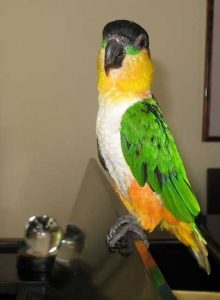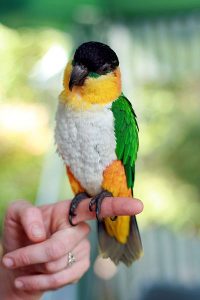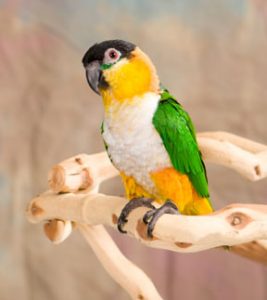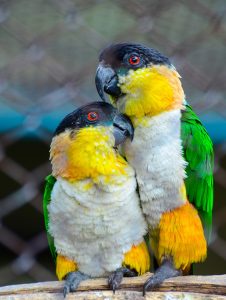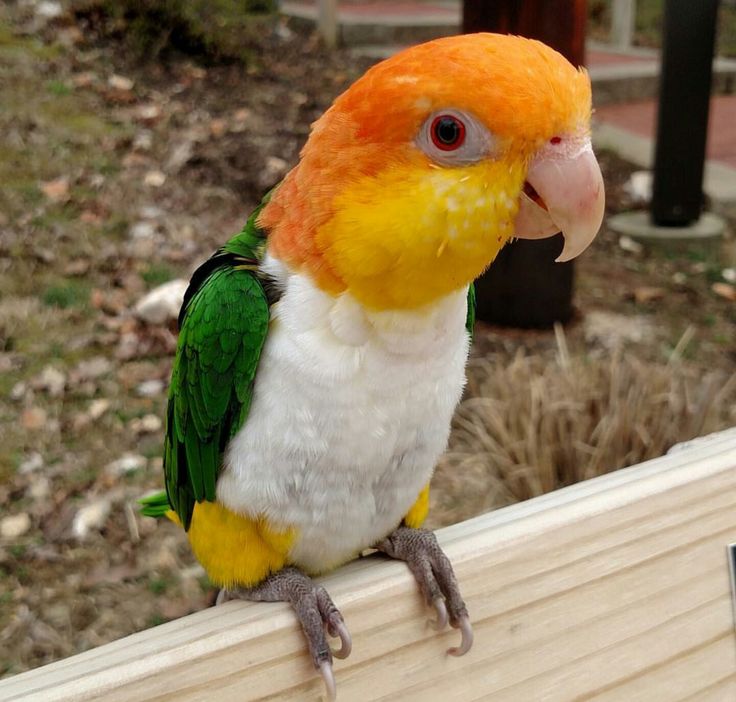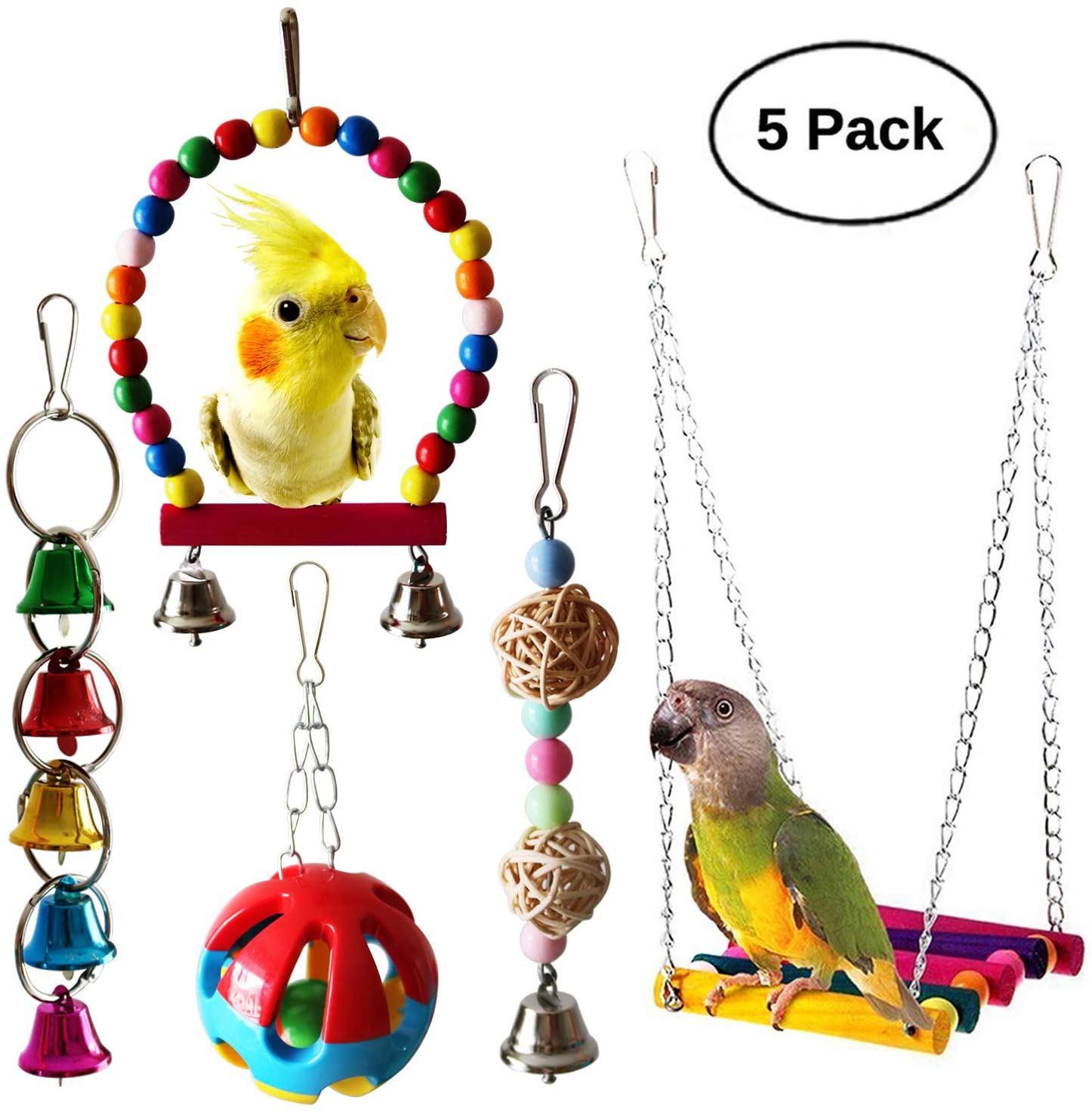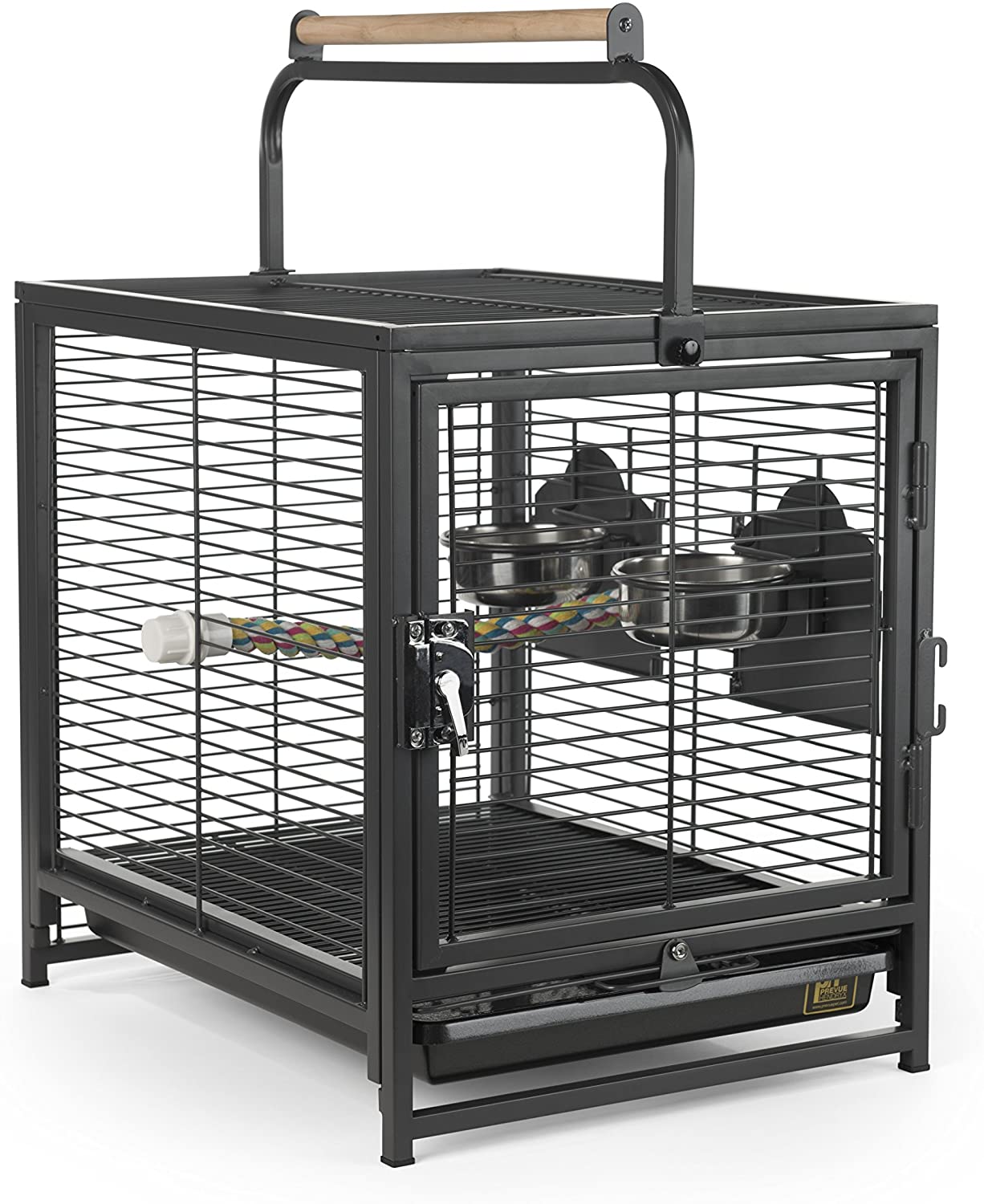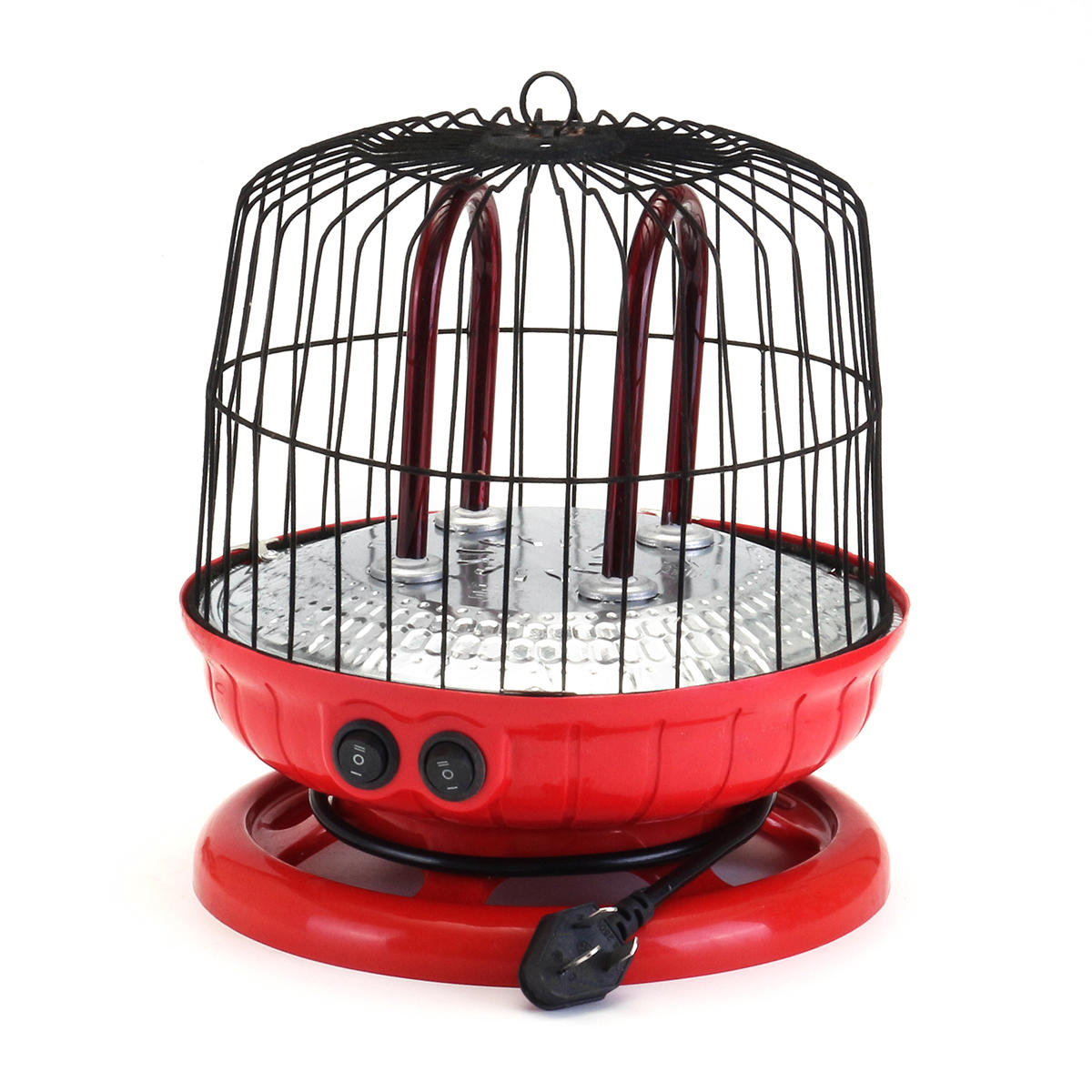The black-headed caique, originating in South America is a famous bird for its outstanding coloration and energized nature. This is a medium-sized parrot with no dimorphism observed between sexes.
Scientific Classification |
|
| Kingdom: | Animalia |
| Phylum: | Chordata |
| Class: | Aves |
| Order: | Psittaciformes |
| Superfamily: | Psittacoidea |
| Family: | Psittacidae |
| Subfamily: | Arinae |
| Genus: | Pionites |
| Scientific Name: | Pionites melanocephalus |
Quick Information |
|
| Other names | Black-headed caique, Black-headed parrot, Pallid parrot, Black-capped parrot, Black-headed parakeet |
| Size | Around 9 inches( 23 cm) |
| Wingspan | Around 14 inches( 36 Cm) |
| Weight | 150-170 gm |
| Color | Green back, black head (hence the name) yellow thigh, white belly and breast rarely with a brown patch, grayish black beak and feet |
| Distribution | From Amazon river to West Ucayali River, Guyana, French, Colombia, Peru, Venezuela, Ecuador |
| Subspecies |
|
| Habitat | Nearby lowland and humid woodland |
| Sound | Loud call while flying, shrieking, mimicking domestic sounds, “kleek kleek” during courtship |
| Clutch | Around 4 eggs |
| Incubation period | Around 25 days |
| Fledging | 70-80 days |
| Lifespan | Maximum 30 Years |
| Diet | Fruits, seeds, and flowers |
| IUCN Conservation Status | Least Concern |
As pets
This social species, often considered as the clown bird, is commonly adopted by the bird enthusiasts because of its cheerful characteristics.
Housing
This hop loving bird requires a large steel cage sizing 24X 24X 36 inches with 1-inch horizontal bar spacing. Place wooden leafy (cottonwood or willow) chewable perches (preferably two, one for sleeping and one closer to the food bowl) to avert the overgrowth of its beak and nail. Also, incorporate some toys, swings to gratify its spontaneous agility. The size of the nest box should be around 10x10x20 inches for breeding.
Temperature
You should ensure an average room temperature for your little pet.
Behavior
This active bird is blessed with a jolly personality, defined by its non-stop chirping and sweet mimicking of the sounds it is habituated to hear. It will keep you engaged with its acrobatic skills throughout the day.
Inquisitiveness being its domineering trait, a hand reared black-headed caique loves to come outside the cage frequently with an inclination towards being cuddled by its master. With proper training and care, its natural tendency of biting can be curtailed as well as aggressiveness that it seldom shows in the lack of attention.
Feeding
Nutritious foods like vegetables and fruits alongside market ready palette are right for your pet. Include sprouted seeds to their diet during spring and summer.
Care
Besides the daily cleaning of the food and water bowls, make sure to replace the chewable toys.
It often enjoys a leaf bath, so try to moisten the leafy perches in addition to providing a regular shower, but never dry your pet in front of a radiator post its bath.
Health problems
Notable symptoms like ruffled plumage, loss of appetite, cloudy eyes, sneezing and feather picking are indications that it needs medical assistance. Other health disorders like Psittacosis (parrot fever), respiratory diseases, intestinal ailments might be observed as well.
Price
The price of a black-headed caique is around $800.
Interesting fact
- Their name is funnily pronounced as “kye-eeks”.
Video: Black-headed caique jumping
References




